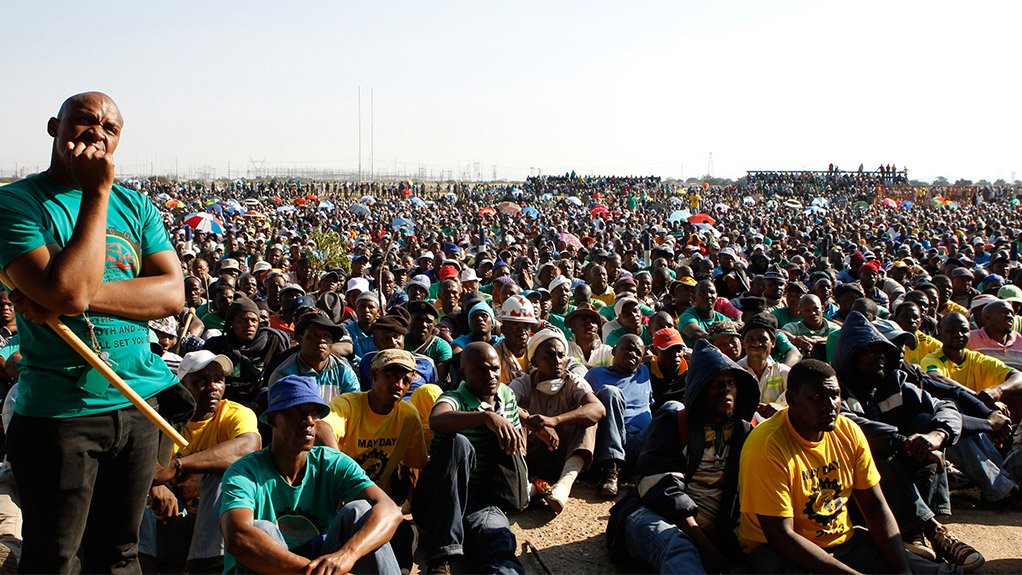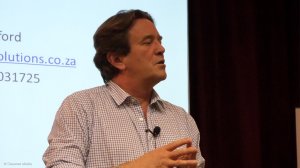Labour instability an ongoing cause for concern




GAVIN HARTFORD Human resources has become “fire fighters” for line issues by running from shaft to shaft to resolve conflicts that arise from employees
SHIFTING LOYALTIES Established trade unions, shop stewards and human resources managers, have in many instances lost credibility in workers’ eyes
GAVIN HARTFORD Human resources has become “fire fighters” for line issues by running from shaft to shaft to resolve conflicts that arise from employees
Turning and turning in the widening gyre
The falcon cannot hear the falconer;
Things fall apart; the centre cannot hold;
Mere anarchy is loosed upon the world,
The blood-dimmed tide is loosed, and everywhere
The ceremony of innocence is drowned;
The best lack all conviction, while the worst
Are full of passionate intensity.
This opening stanza of William Butler Yeats’ poem, The Second Coming, in many ways describes the current state of South Africa.
This is the opinion of industrial sociologist Gavin Hartford, who said at a business seminar hosted by Wits Business School, in Johannesburg, last month that, since the ‘Marikana Massacre’ – the 2012 tragedy at platinum producer Lonmin’s Marikana mine, in the North West, which resulted in the death of 44 people, the majority of whom were striking mineworkers – the very structure of wage negotiating mechanisms had been shaken to the core.
Hartford stated that established trade unions, shop stewards, human resources (HR) managers and collective bargaining councils, among others, had in many instances lost credibility in the eyes of workers.
This had resulted in the establishment of many independent workers committees that were not tied to any trade union and/or the creation of new trade unions by disgruntled workers.
“Unionism is big business these days, as there is a lot of money involved with unions,” he pointed out, adding that this had also resulted in increased rivalry and aggression among unions to secure members, which often led to violence.
The growing discord between the African National Congress and labour unions, such as the National Union of Metalworkers of South Africa, had also added another layer of complexity to labour relations, Hartford noted.
Further, he highlighted that, to understand what was happening in any union, one had to investigate the relationships between members and the shop floor leader in particular.
Hartford explained that, if a union lost its capacity to be democratically accountable for and to promote the views of members, it lost its capacity to hold the loyalty of those members.
He said that there was a widespread practice of shop stewards failing to be accountable to specific employee constituencies and preferring instead to involve themselves across mine operations and in the above-ground union offices.
“Ever since the introduction of laws such as the Labour Relations Act, the Employment Equity Act, the Mineral and Petroleum Resources Development Act and the Mine Health and Safety Act, the front line supervisor has become a production and safety functionary, with little or no people problem resolution skills,” Hartford averred.
Moreover, the business of people management, which was core to any line function anywhere in the world, had become the responsibility of HR professionals and/or the labour unions.
Hartford said this practice had heightened the alienation of employees from line management, widening and entrenching the gulf between line supervisors and employees.
“Management structures and capacity are crucial to understanding the ability of the company to control and direct employees to achieve the company’s strategic goals and business plans.
“However, in the mining industry, this core line management function is almost totally absent.”
He said that there was a widespread perception among line managers that their superiors had overinvested in union-driven, collective processes.
Hartford commented that this practice had, in turn, led to significantly reduced line management capacity for and accountability in terms of people problem resolution on the production line.
Significant reliance on union-driven communication across the industry had further reduced the responsibility of line management to identify people problems, communicate the challenges and resolve the issues and employee problems.
He pointed out that this problem was made more complex by the conflicted authority of the lowest line management structures (shift supervisors and miners) in mining, because most of this critical layer of front line managerial leadership were union members and part of the bargaining unit.
Therefore, Hartford explained, line mangers were reluctant to take seriously any management function that may be seen to be unpopular with their union colleagues.
Additionally, he pointed out that HR personnel had become the “firefighters” for line issues by running from shaft to shaft to resolve conflicts that arose involving from employees.
“This misalignment in the managerial structures of the company results in low levels of accountability and ownership by line management and a blame-and-pass-the-buck culture proliferating, while people problems fester in the workforce,” Hartford said.
Comments
Press Office
Announcements
What's On
Subscribe to improve your user experience...
Option 1 (equivalent of R125 a month):
Receive a weekly copy of Creamer Media's Engineering News & Mining Weekly magazine
(print copy for those in South Africa and e-magazine for those outside of South Africa)
Receive daily email newsletters
Access to full search results
Access archive of magazine back copies
Access to Projects in Progress
Access to ONE Research Report of your choice in PDF format
Option 2 (equivalent of R375 a month):
All benefits from Option 1
PLUS
Access to Creamer Media's Research Channel Africa for ALL Research Reports, in PDF format, on various industrial and mining sectors
including Electricity; Water; Energy Transition; Hydrogen; Roads, Rail and Ports; Coal; Gold; Platinum; Battery Metals; etc.
Already a subscriber?
Forgotten your password?
Receive weekly copy of Creamer Media's Engineering News & Mining Weekly magazine (print copy for those in South Africa and e-magazine for those outside of South Africa)
➕
Recieve daily email newsletters
➕
Access to full search results
➕
Access archive of magazine back copies
➕
Access to Projects in Progress
➕
Access to ONE Research Report of your choice in PDF format
RESEARCH CHANNEL AFRICA
R4500 (equivalent of R375 a month)
SUBSCRIBEAll benefits from Option 1
➕
Access to Creamer Media's Research Channel Africa for ALL Research Reports on various industrial and mining sectors, in PDF format, including on:
Electricity
➕
Water
➕
Energy Transition
➕
Hydrogen
➕
Roads, Rail and Ports
➕
Coal
➕
Gold
➕
Platinum
➕
Battery Metals
➕
etc.
Receive all benefits from Option 1 or Option 2 delivered to numerous people at your company
➕
Multiple User names and Passwords for simultaneous log-ins
➕
Intranet integration access to all in your organisation




















